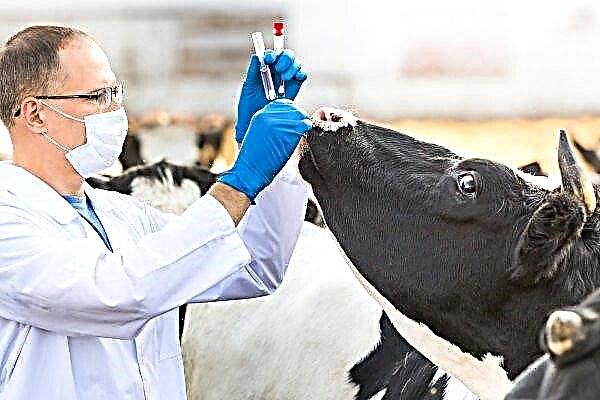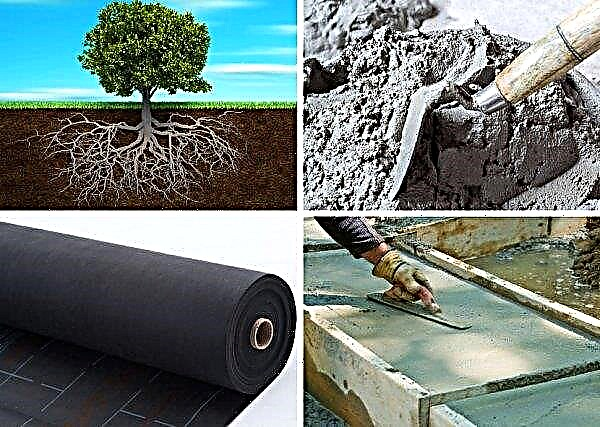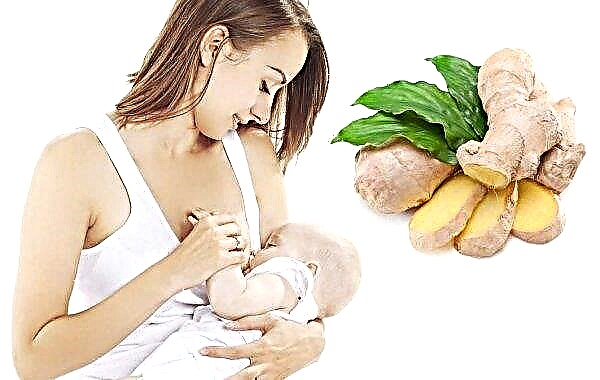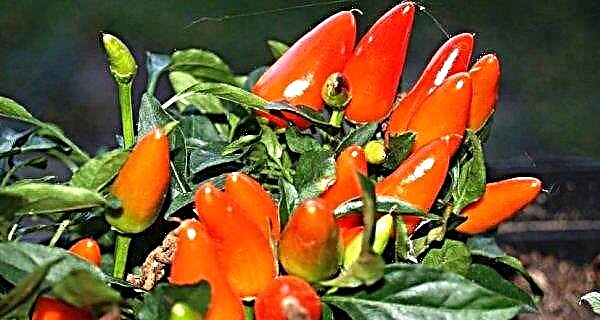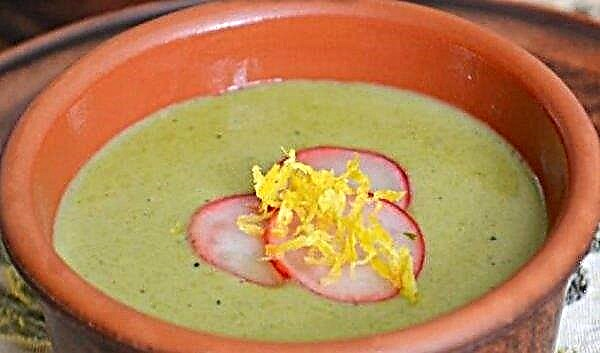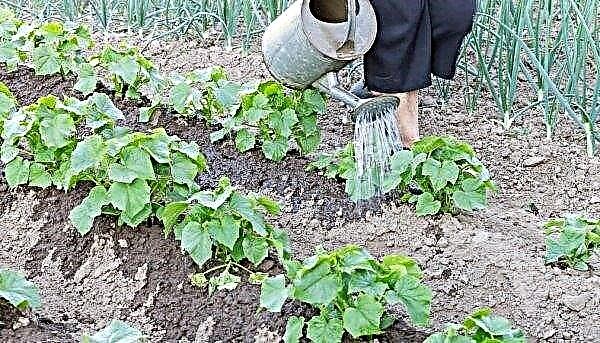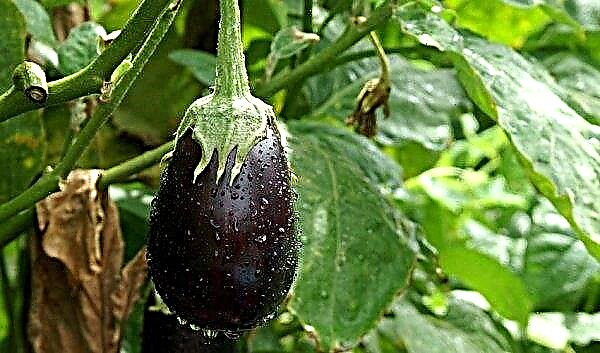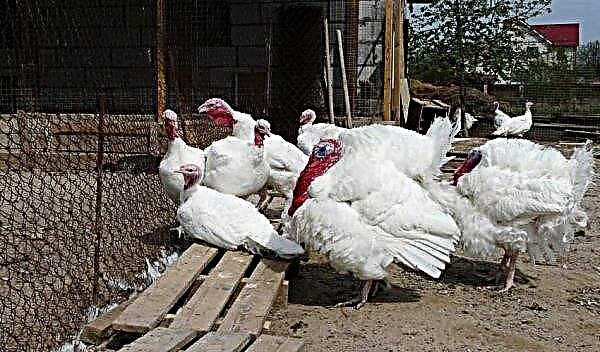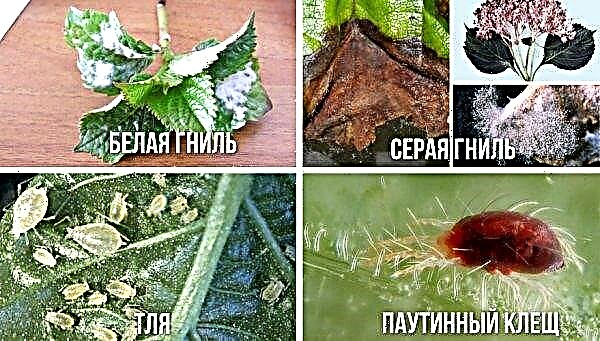In order to get a good potato crop in the summer, you need to make an effort to choose the right variety. Previously, you should familiarize yourself with information about its characteristics and the required growing conditions. We offer you to get acquainted with the advantages and disadvantages of the Vineta variety.
Characterization and description of the variety
Potato Vineta (Veneta) was born thanks to the efforts of German breeders. Work on its removal ended in the 50s of the twentieth century. As a result, a plant with a strong immune system was created, able to survive and bring a good harvest under adverse conditions, to resist the main ailments and pests of solanaceae. The variety got into the State Register of the Russian Federation in 2001.
Did you know? The cultivation of potatoes began on the territory of modern Bolivia 9-7 thousand years ago. Residents of many South American countries, in addition to eating tubers, considered this plant animate and worshiped it.
In plants belonging to this variety, tall and sprawling bushes are formed - up to 70 cm in height. The stem grows straight. The leaves are medium in size, painted in a light green color. The plant blooms in fine white.
The tubers are medium in size, reaching a mass of 67–95 g. They are covered with a yellow mesh skin. The pulp is yellow, dense. Tubers ripen together.

Advantages and disadvantages of the variety
- The advantages of plants and tubers of the described variety include:
- it does not impose special requirements on the composition and structure of the soil;
- able to grow well under adverse conditions;
- shows consistently good yield indicators;
- it requires a minimum set of care activities;
- tubers have high rates of marketability - up to 97%;
- the fruit tastes good;
- can grow in drought conditions;
- exhibits resistance to mechanical damage.
Only one drawback of the variety can be distinguished - susceptibility to damage to late blight leaves.
Ripening dates and productivity
Vineta potatoes are ranked as early ripe varieties. Mass harvesting can begin 60–70 days after planting. It is possible to enjoy young potatoes starting from the 45th day. That is, if you land in the first week of May, you can dig for a test already in mid-June.
The variety shows consistently good productivity - up to 40 tons with 1 centner. On one bush, 10 to 12 tubers can be tied.
Potato varieties such as:
Taste qualities
Of course, every gardener is interested in the question whether the fruits of this variety are tasty. Experts rate the taste of Vineta potatoes as good. It does not darken and does not crumble after cooking, can be used for various purposes in cooking.
Optimal landing times
Potatoes are recommended to be planted at the moment of soil warming up to a temperature of + 8 ... + 10 ° С to a depth of 10 cm. Thus, planting dates will depend on the growing region and climatic conditions that are typical for it. But, as a rule, tubers are planted in the ground no earlier than mid-April.
In warm regions, when cultivated under a film, potatoes are planted earlier - at the end of March. If you follow the popular belief, then planting potatoes should be taken care of when the buds on the birch and the flowers on the bird cherry begin to blossom.
Planting and growing potato varieties
In order to avoid disappointment from a poor crop or its loss as a result of spoilage by diseases and harmful insects, it is necessary to follow certain rules at the planting stage, such as planting potatoes on a site where only successful predecessors grew, properly prepare the soil and planting material.
Did you know? In the XVI century, when potatoes were brought to Europe, Europeans ranked it as an ornamental and poisonous plant. In 1772, the Paris Faculty of Medicine, taking into account the work of the French agronomist Andre Permantier, announced the edibility of tubers.
Crop rotation rules
Each gardener should know that to prevent the accumulation of toxins, pathogens and harmful insects in the soil, as well as to reduce the consumption of nutrients and get good yields, related plant species can be planted on one site for only 2 years in a row.
In the future, other crops need to be planted in the same place. Thus, the observance of crop rotation rules has a great influence on the growth and development of potatoes, the abundance and quality of the crop. According to them, the best predecessors for potatoes are:
According to them, the best predecessors for potatoes are:
- siderates;
- cucumbers
- legumes;
- bow;
- cabbage;
- carrot;
- pepper;
- beet.
You can not plant a plant after such crops:
- potatoes;
- Tomatoes
Potatoes can be returned to the same area only after 4-5 years.
Soil requirements
Vineta potatoes grow well on sandy loam, loam, sandy soil, fertilized with minerals. Also, good yields can be obtained when grown on fertilized peatlands. Slowly grow plants planted in soil with a high nitrogen content.
The soil for planting potatoes is prepared since autumn. At this time, it is necessary to thoroughly clean the site of plant debris, dig it deep, plow it to a depth of 22–25 cm, add mineral fertilizers (urea) and organic fertilizers (manure, ash), and form high beds.
If the soil did not fertilize in the fall, then this must be done in the early spring, a few weeks before planting. Dry humus (1 l) and wood ash (1 handful) are added to each well. It will also require saturation of the soil with minerals: nitrophos (1 tbsp. L / 1 well), ammophos (1 tbsp. L / 1 well) with dolomite flour mixing (0.5 tbsp. / 1 well).
Important! A well-lit area should be reserved for growing potatoes. The beds are recommended to be located from the northwest to the northeast.
Preparing planting material
Before planting the tubers need to germinate. To do this, a month before the expected date of placement in the ground, they are removed from a cool storehouse to a place with diffuse lighting, air temperature + 12 ... + 15 ° С in the daytime and + 6 ... + 8 ° С in the night, humidity 90–95%.
Tubers weighing 35–85 g with strong shoots up to 1 cm long are selected for planting. Damaged and rotten seeds are discarded.
If you need to speed up the process of germination, then you can resort to the following actions:
- place the fruits in moist sawdust or peat treated with a solution of copper sulfate (2 g / 1 l of water), additionally cover the planting material with a layer of wood ash;
- place the tubers in 3-liter glass containers, which are installed on the sunny windowsill.
To protect the tubers from diseases and pests and accelerate the process of germination, they are processed 3 days before planting:
- aqueous solution of wood ash;
- the drug "Prestige";
- means "Epin-Extra."
Landing pattern
When planting potatoes, you should use these recommendations:
- Apply a landing pattern of 60 × 70 cm.
- To maintain a distance of 28-30 cm between plants. There should be no more than 5-6 bushes per 1 m².
- Tubers close up to a depth of 8-10 cm.

Landing is carried out in previously dug grooves or in holes on the ridges. It is advisable to lay the rotted grass in a small layer on the bottom - this will protect the seeds from frost. 1-2 tubers are placed in the holes. After placing the seeds, they are sprinkled with soil, and then loosen it with a harrow or rake in order to avoid the formation of lumps and a hard crust. At the end, sheltering the beds with a film or non-woven material is carried out.
Features of potato care after planting
Potato care involves the following procedures:
- hilling;
- loosening;
- weeding;
- top dressing with organic fertilizers;
- preventive spraying against diseases and harmful insects.
Hilling and loosening the soil
Hilling is carried out at least 3 times per season. This procedure protects seedlings from frost. Hilling is first produced when seedlings appear. They are sprinkled with earth to the top. The second time the procedure is carried out for plants that bloom. Act at this time you need to be careful so as not to catch the inflorescences. The third time the soil is sprinkled to the trunk when the tops are spread.
The second time the procedure is carried out for plants that bloom. Act at this time you need to be careful so as not to catch the inflorescences. The third time the soil is sprinkled to the trunk when the tops are spread.
Loosen the soil in order to prevent the formation of a hard crust on the surface of the soil, as well as improve its air and moisture conduction. Loosening is carried out after rainfall and watering. In addition, you will need to regularly clean the site of weeds. Weeding is often carried out - starting from the 6-7th day after planting and before harvesting.
Watering
Among the advantages of the variety are its drought tolerance. This means that with normal rainfall, watering for potato bushes is not required.
If precipitation is not enough, then you need to produce 3 irrigation:
- After the emergence of sprouts.
- At the time of the formation of the buds.
- After flowering.

Additional moisturizing will be required in the case of dry and hot summers. About 1 liter of water is used per 1 m². It is advisable to water the potatoes in the early morning with warm water.
Top dressing
Potatoes are fed with organic fertilizers, but only if necessary. Bird droppings are useful for the plant. It is introduced if the bushes are noticeably weakened. Recommended application time is between the first and second hilling.
Also, under prolonged bad weather conditions, the plants are supported by applying water infusions of fresh cow manure (in the ratio 1: 8), bird droppings (1:20), nettle leaves (1: 6), dandelion leaves (1: 6).
Possible growing difficulties
One of the advantages of the Vineta variety is its strong immunity, which allows the plant to successfully resist almost all the dangerous ailments that affect potatoes, in particular viruses, cancer, blackleg, scab, brown spotting, alternariosis, fusarium infection.
A big plus is the resistance to the nematode, as well as the curling of the leaves. This feature relieves the owner of the site from the need for preventive measures against these misfortunes.
The only thing that Vineta potatoes are susceptible to is the late blight of the tops.  In order to prevent this disease from entering the garden, it is necessary to regularly get rid of weeds and produce planned hills, carry out preventive spraying with Acrobat and Ridomil Gold.
In order to prevent this disease from entering the garden, it is necessary to regularly get rid of weeds and produce planned hills, carry out preventive spraying with Acrobat and Ridomil Gold.
Of the pests, the danger is the Colorado potato beetle. They fight it mechanically and by spraying with an aqueous solution of urea (100 g / 10 l). For prevention, onion husks are put into the holes during planting, which can scare away a dangerous insect.
Features of harvesting and storage of crops
Harvesting of tubers begins when the leaves of the lower tier turn yellow. Mass harvesting is done when the whole tops are yellow. It is better to lower the harvested crop into the cellar not immediately. It is placed in bags and put in a dark place with good ventilation and a temperature of + 15 ... + 20 ° С.
After 1-2 weeks, the tubers are inspected and discarded unsuitable for storage. After that, the potatoes are transferred to the storage with the following parameters: air temperature - + 4 ... + 5 ° С, air humidity - 90–95%, good air circulation. Storage facilities are pre-disinfected.
In order to preserve the tubers for seeds, they perform the following actions:
- They clean it from the ground and wash it.
- They are placed in a place well lit by the sun until the peel becomes greenish.
- They are sent to storage with a temperature of + 3 ° C and a humidity of 95%.
Thus, the potato Vineta undoubtedly deserves the attention of gardeners. It brings delicious high-quality fruits, requires minimal care costs, does not impose requirements on soil and moisture. It can be grown by people who are just mastering the basics of gardening.Important! Tubers that are planned to be used in the spring for planting should be stored separately from other potatoes.

